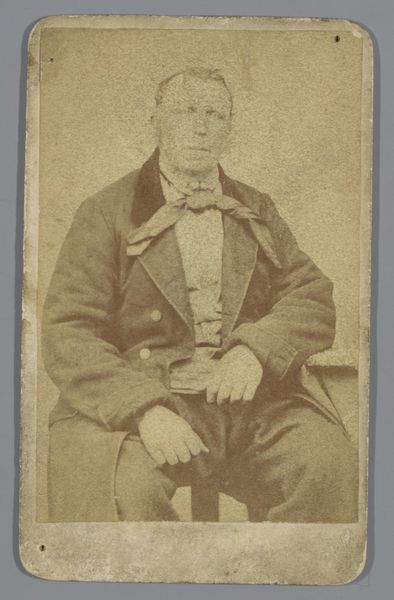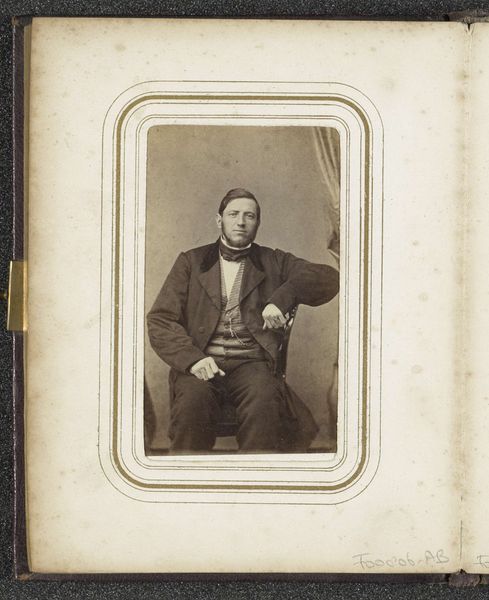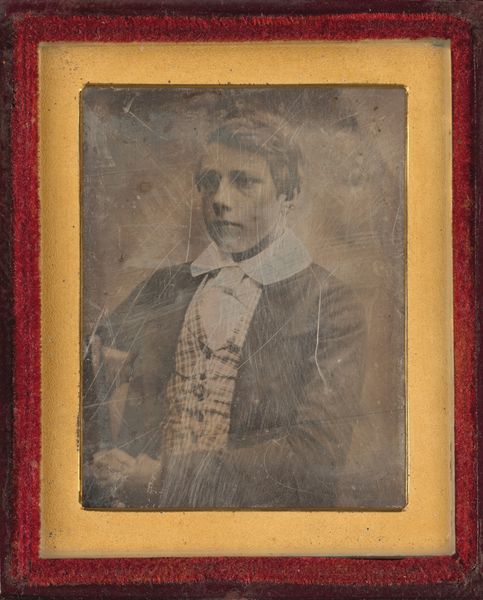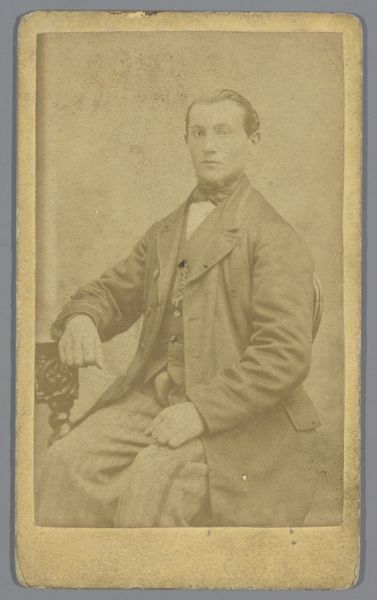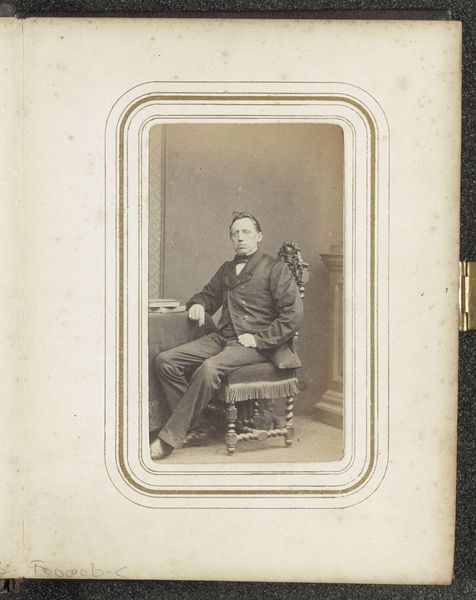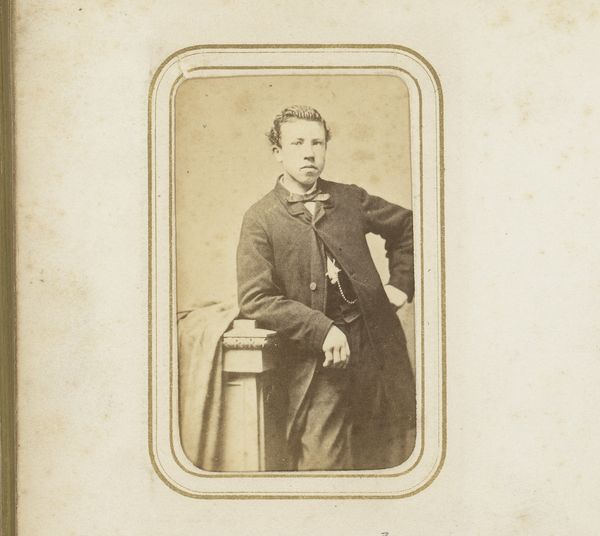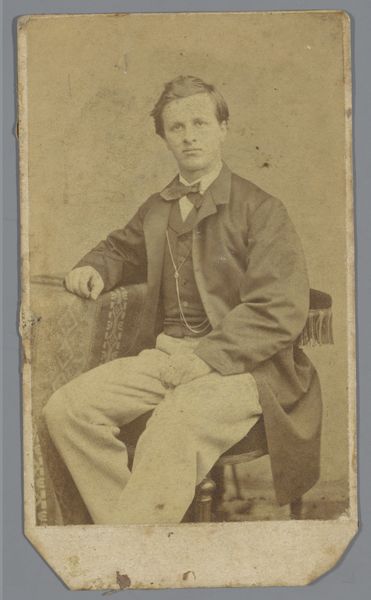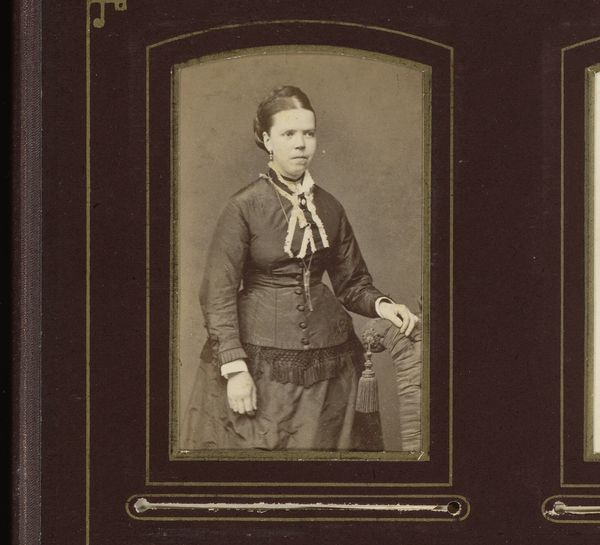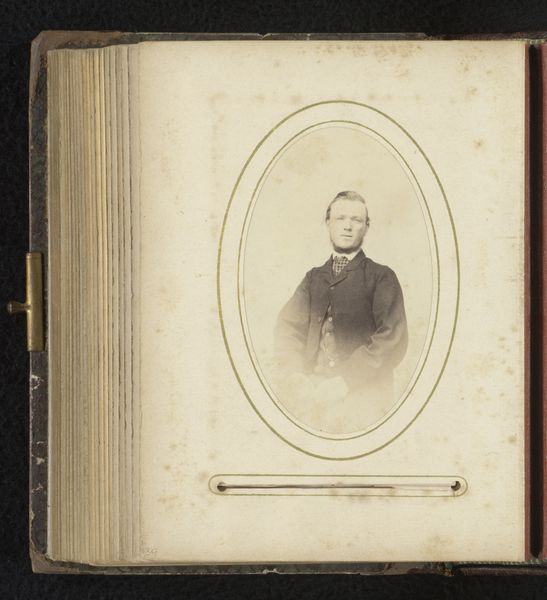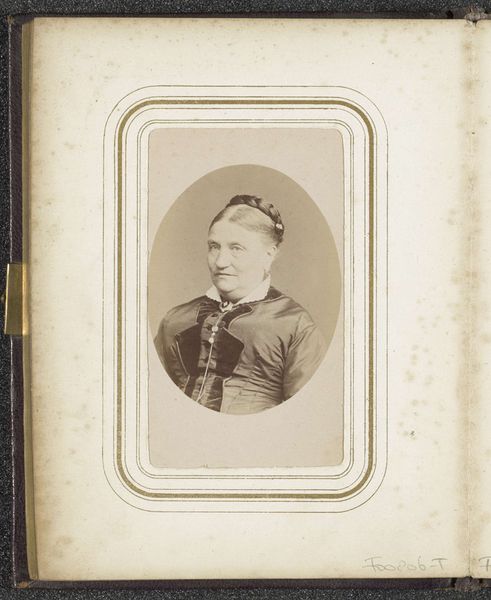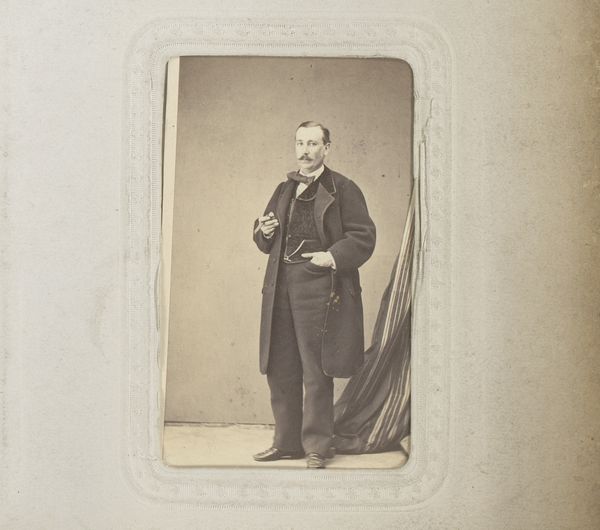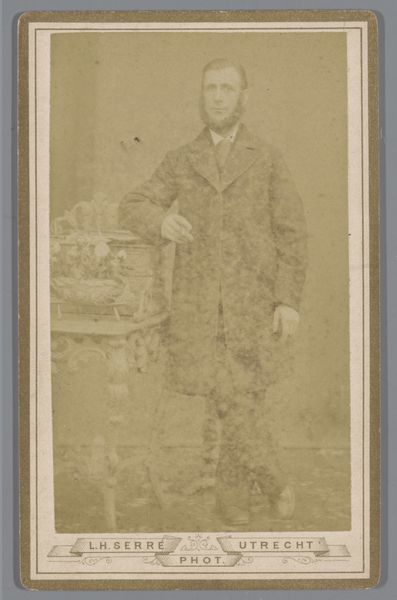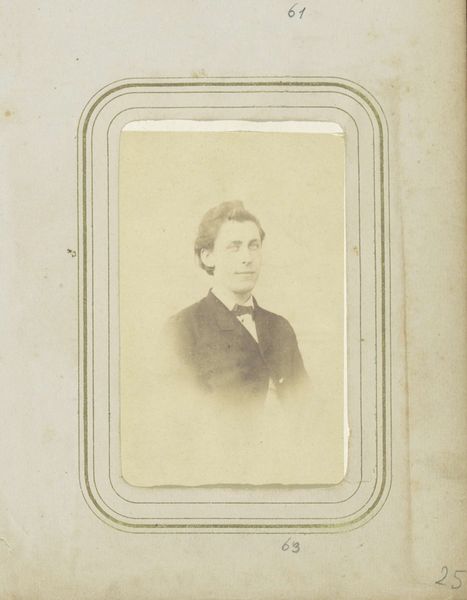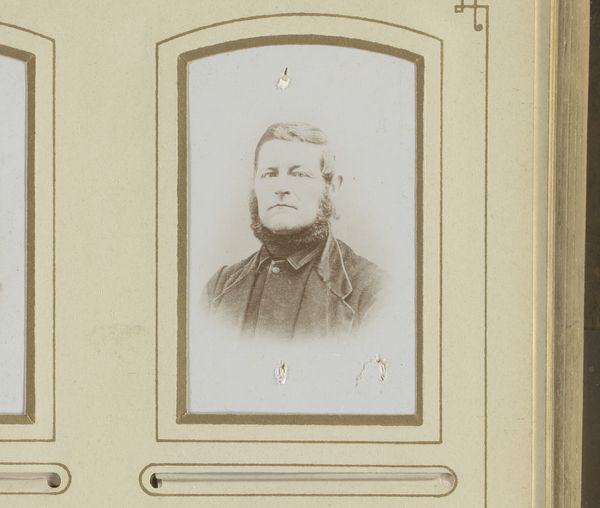
daguerreotype, photography
#
portrait
#
daguerreotype
#
photography
#
romanticism
Dimensions: height 69 mm, width 56 mm, height 87 mm, width 76 mm
Copyright: Rijks Museum: Open Domain
This is an early photograph, likely from the 1840s or 50s, by Antoine François Jean Claudet, showing an unknown man with glasses. Considered in its time a triumph of science, photography soon became a new way of representing the world and its inhabitants. Here, an anonymous sitter adopts a thoughtful pose, his hand raised to his head in a gesture familiar from painted portraits. Yet, unlike those earlier likenesses, this image offers a seemingly unmediated glimpse of a real person. But let's think about the social conditions of this new art. The sitter is dressed respectably and wears glasses, suggesting he is a professional, perhaps a doctor or lawyer. Photography democratized portraiture, making it accessible to the middle classes, but it remained a commercial transaction. Claudet ran a portrait studio in London, and his success depended on attracting clients willing to pay for this new form of image-making. As historians, we can use sources like studio ledgers, newspaper advertisements, and personal letters to better understand the role of photography in the 19th century. Only then we can appreciate the complex interplay of art, science, and society in a picture like this.
Comments
No comments
Be the first to comment and join the conversation on the ultimate creative platform.
